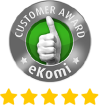
Tom Joyce
Productivity has massively improved – thanks to the Cloud
- October 19, 2021
- , 9:03 am
- , Cloud
A two-year study by Stanford University has confirmed what many already knew: working from home is a productivity booster. What has been less understood is how Cloud has facilitated productivity across WFH and office teams – until now. It’s clear that the key driver and facilitator of improved WFH is the adoption of Cloud apps and infrastructure, but how are Cloud platforms responsible for increased productivity?
In a 2015 report by Microsoft Office 365, Cloud apps were expected to be adopted by 78% of enterprise businesses by 2020. Coronavirus accelerated matters significantly, and now, we live in a truly remote, Cloud-based age of work. Cloud, even in office-based teams, is still able to provide substantial, noticeable productivity gains. Find out how.
IT solutions, simplified
Software tools are one thing – the hardware to run them on is another. Even if you’re computing locally on the latest hardware, you still need somewhere to store all the data you produce. In large organisations, huge scores of data can be generated in a day. Traditionally, storage and archiving (possibly some form of computing and virtualisation, too) was achieved with on-site servers.
Anyone who’s run a server room at a company building (especially one that wasn’t designed to house one) knows how complex they are, how fragile they can be, and how much maintenance they require. Anyone who’s relied on an internal IT infrastructure like this knows how damaging it can be when it goes wrong.
Cloud solutions all but eliminate the hardware, maintenance and frustration of an internal IT infrastructure. By offloading resources to a private Cloud, dedicated hardware running at precise specifications can be procured – managed by an external team whole only job is to keep your Cloud apps running.
This frees your IT team and company resources to focus on high-value tasks, with a boon to productivity. But freeing your IT teams is only the start.
Business teams benefit, too
Cloud apps offer productivity benefits for every team in your business, including Finance and HR, Sales, Marketing – you name it. If there’s work to be done on a computer, Cloud tools can do it better than locally installed software. Here’s why: automation.
Automating workflows and basic tasks frees time and mental pressure from your teams. The result? Happier, more engaged employees, with more time to do what matters in their roles. This is hugely important, and not only for productivity. Satisfaction with work, higher engagement and using your skills to make a difference all add up to a strong workforce and reduced attrition.
That’s not all, though. Cloud apps have the advantage of instant upgrades, usually made at regular intervals. This unlocks more power within the tools your team uses – without additional complexity. That’s because upgrades are usually small and incremental, easing users into new designs or layouts, instead of benign transformational and requiring more training to use.
Think of it this way: when the iPhone launched with iOS installed, it was totally revolutionary. Easy to use, by anyone. Fast forward to today and the capabilities of the platform are lightyears ahead – almost unrecognisable. But each year, the platform updated just a little bit. Small tweaks here and there, occasional redesigns – and a swathe of creeping improvements behind the scenes.
Nobody had to relearn anything – it all just worked. But the capability of the platform has exploded, giving users the power to do more than ever before.
Cloud apps, with their incremental upgrades, work in the same way; they remain intuitive to people who’ve already invested in them, while unlocking even more functionality.
Cloud for collaboration? Remoters, rejoice
Remote isn’t the future – it’s now. And Cloud has levelled performance and accessibility around the world. Whether your teams work in a single office, at global sites or at home, Cloud is a breakthrough for collaboration. Every study we’ve read agrees – and so do the most prominent leaders in business. Collaboration is rocket fuel for high performers – but even when working in the same building, collaboration in software over multiple pieces of hardware is tricky.
With local storage and in-house servers, documents are more than often siloed. Transparency is non-existent. Copies of copies are generated, versions are difficult to track, and sometimes, work gets duplicated many times over. It’s wasteful and frustrating.
But Cloud was made for collaboration.
In Cloud apps, everyone can work at the same time, in real time. Version tracking is simple, with no need for duplication. And transparency runs from the top of the company down.
Anyone can search for files they need, provided they have the right access level. They can always request permission if they don’t – but final control on what’s visible can be set by management.
And therein lies the power of Cloud; your teams can do more, with fewer resources, in less time. Isn’t it time you joined the Cloud, too?
Perform a Cloud migration – with an expert in your team
ClearHub specialises in finding the best Atlassian Cloud migration contractors, to equip your business for hybrid and remote working – and the next stage of your growth. We have access to the world’s most admired Cloud migration contractors.
Want to know more? Get in touch with the ClearHub team today – call +44 (0) 2381 157811 or send your message to info@clearhub.tech.



